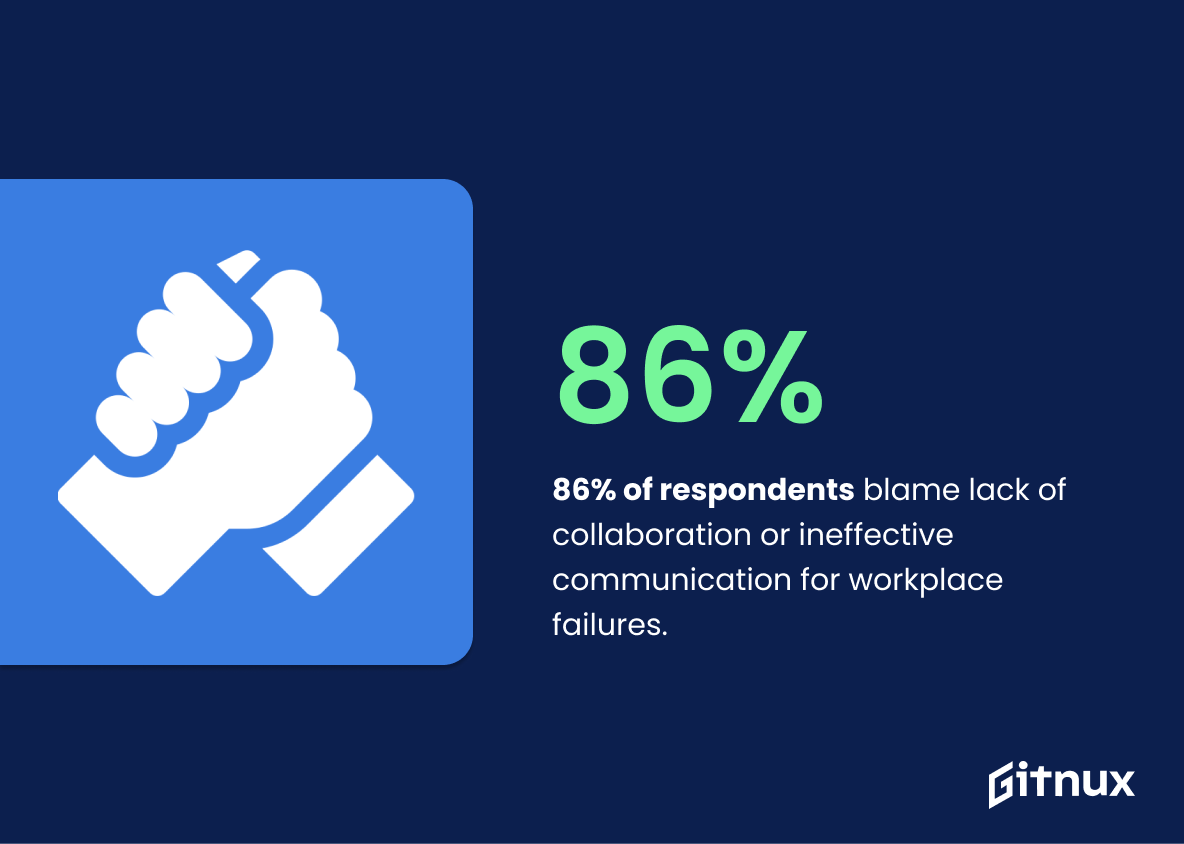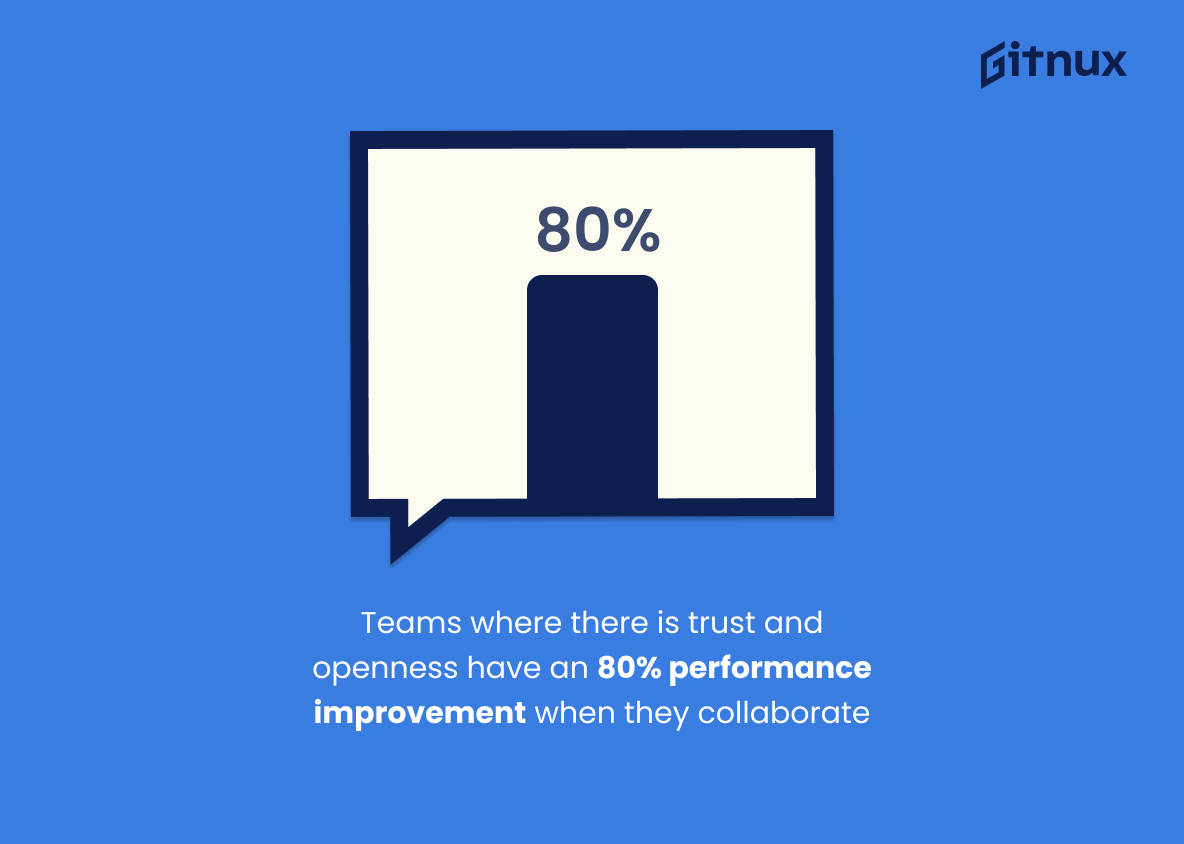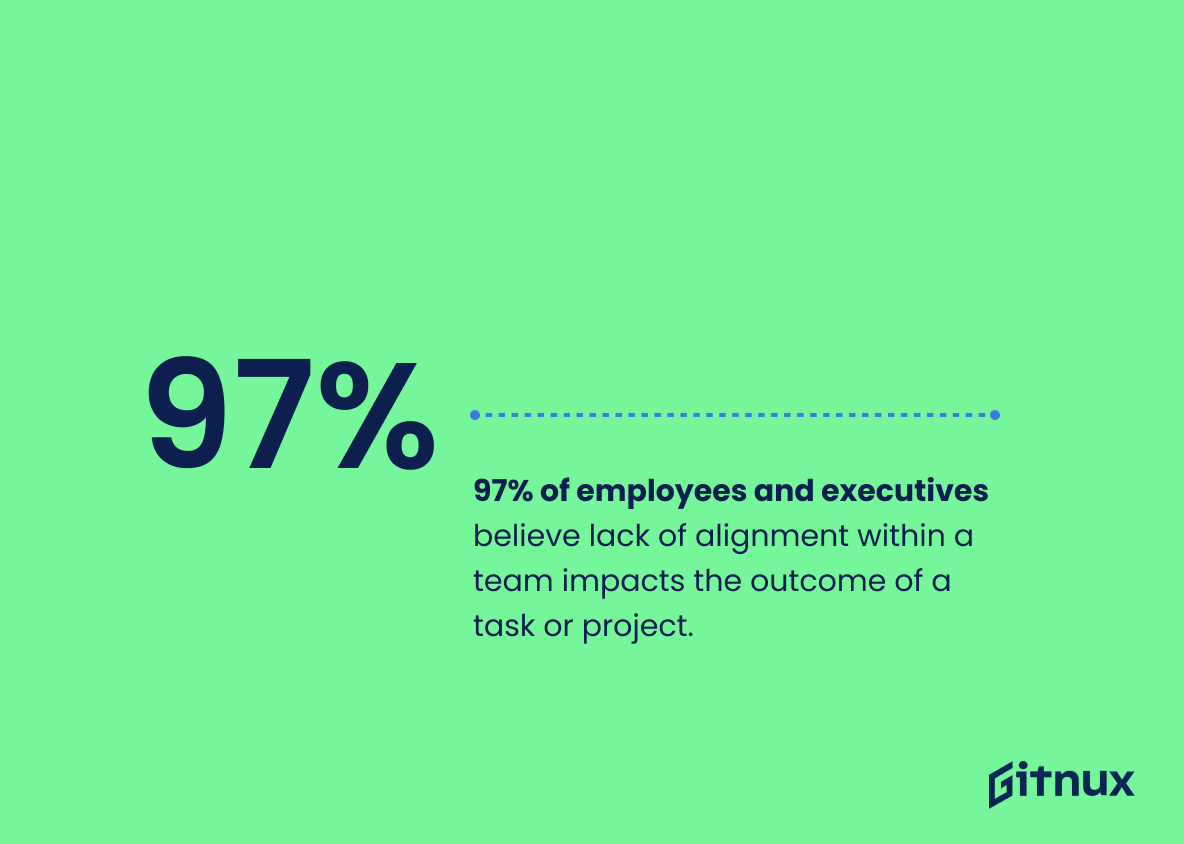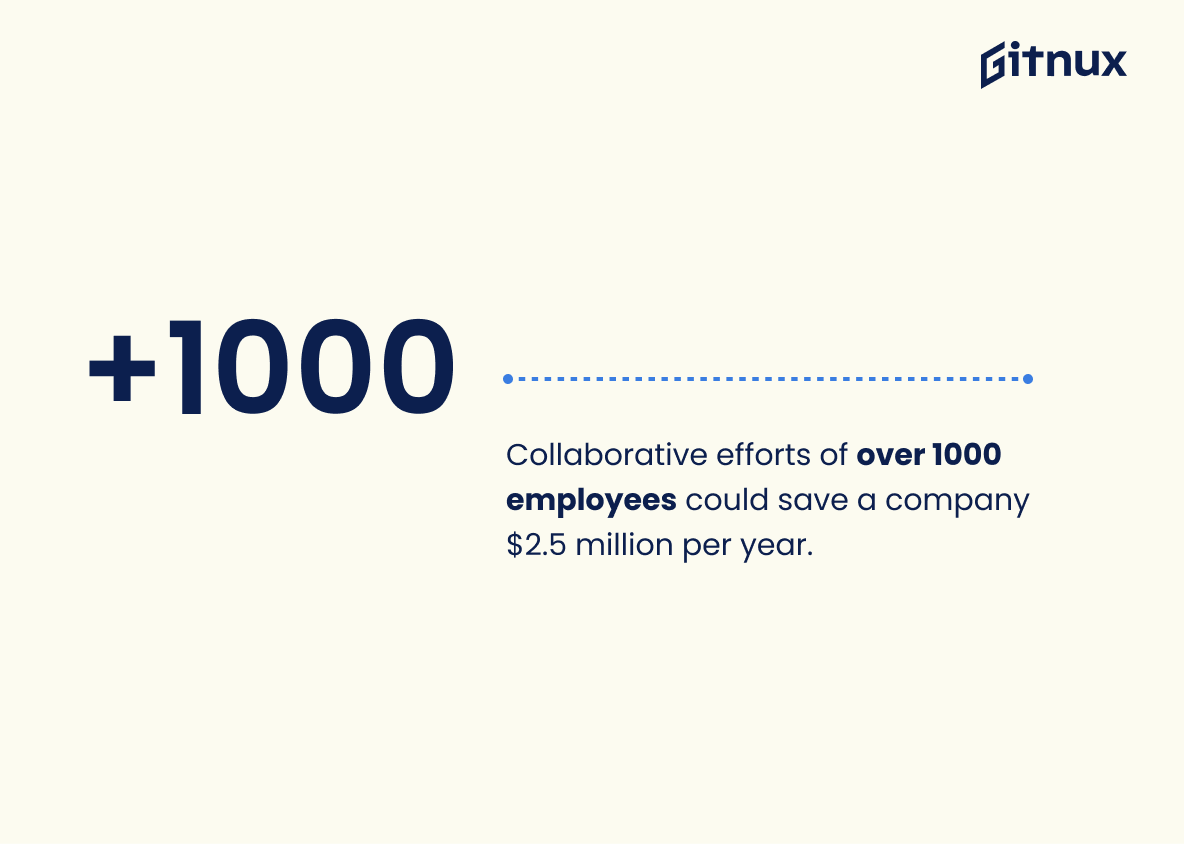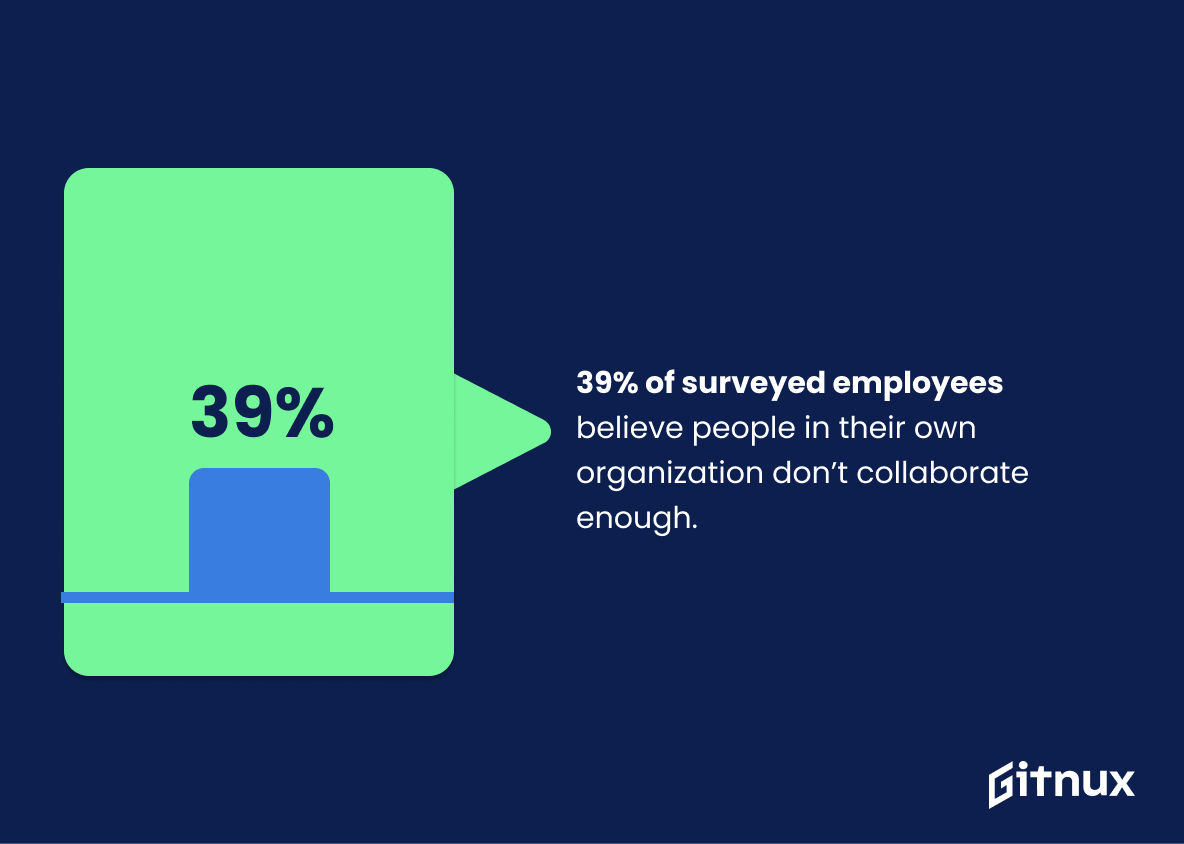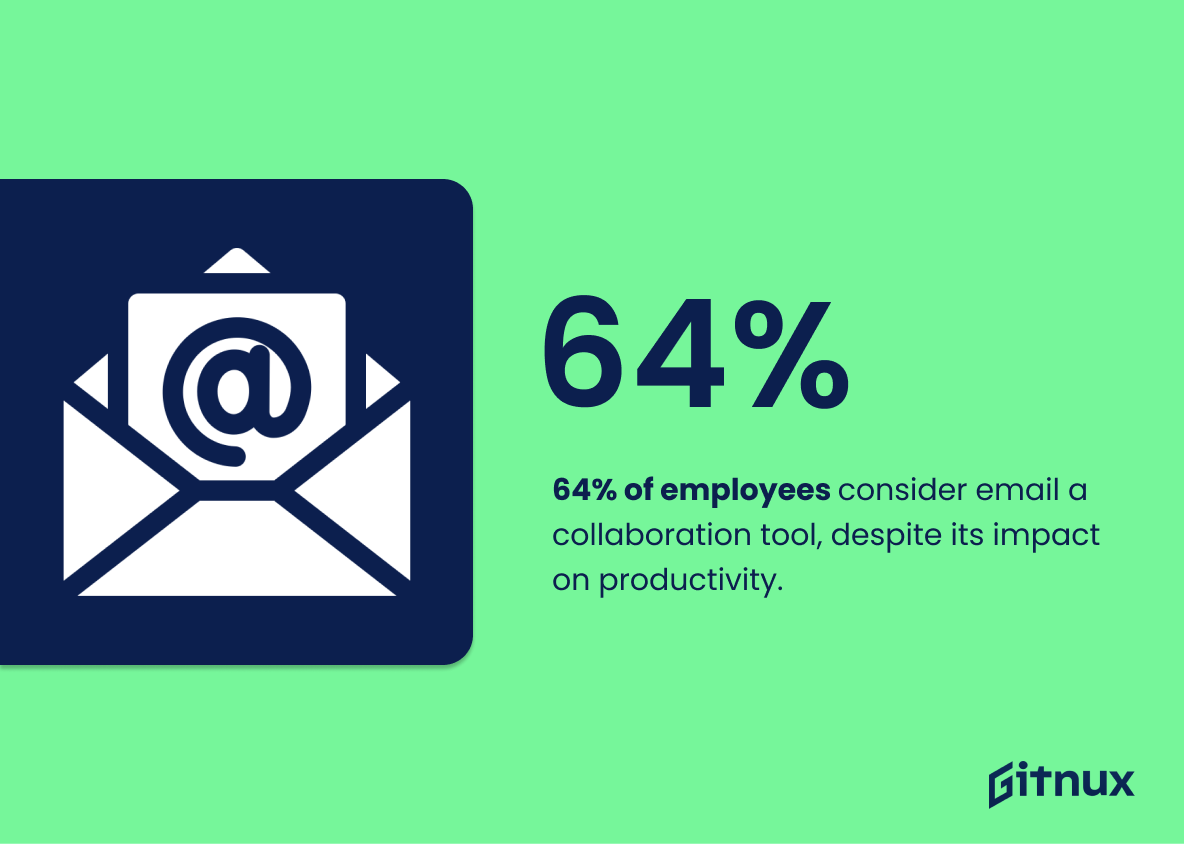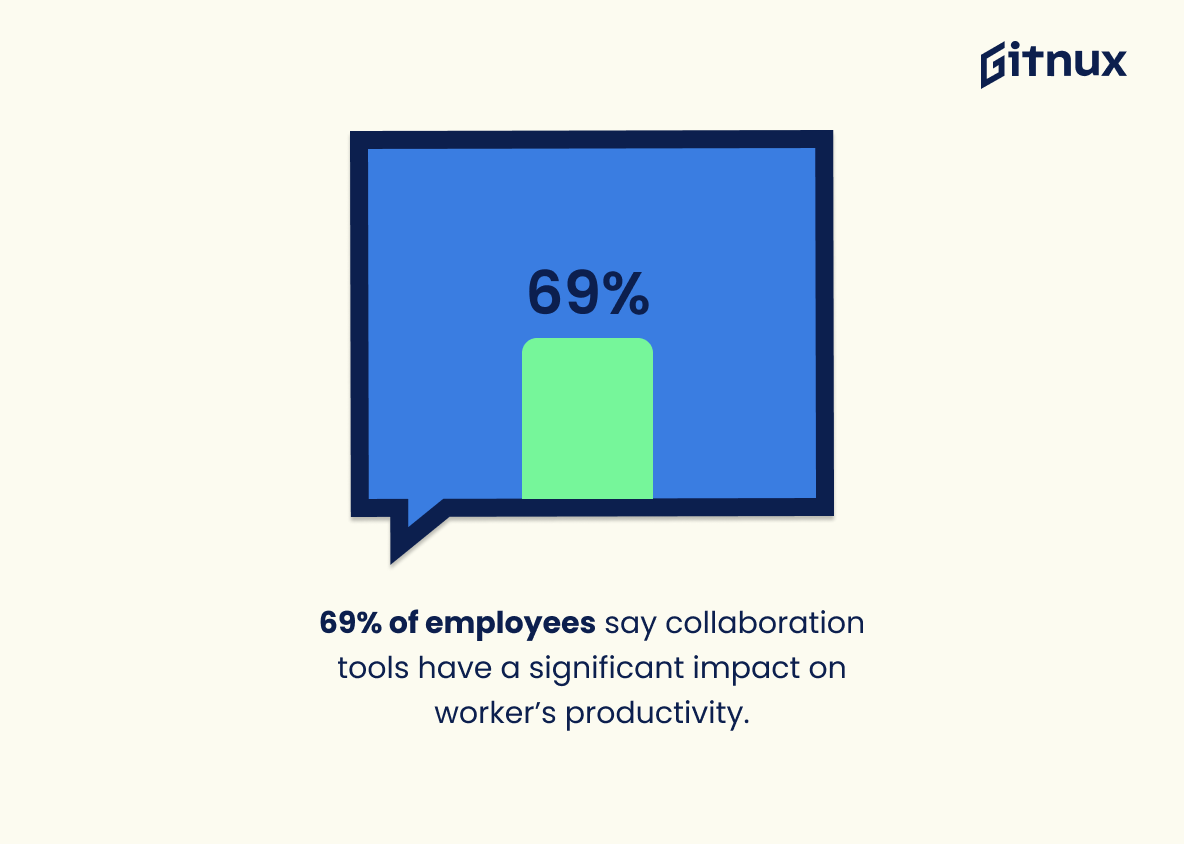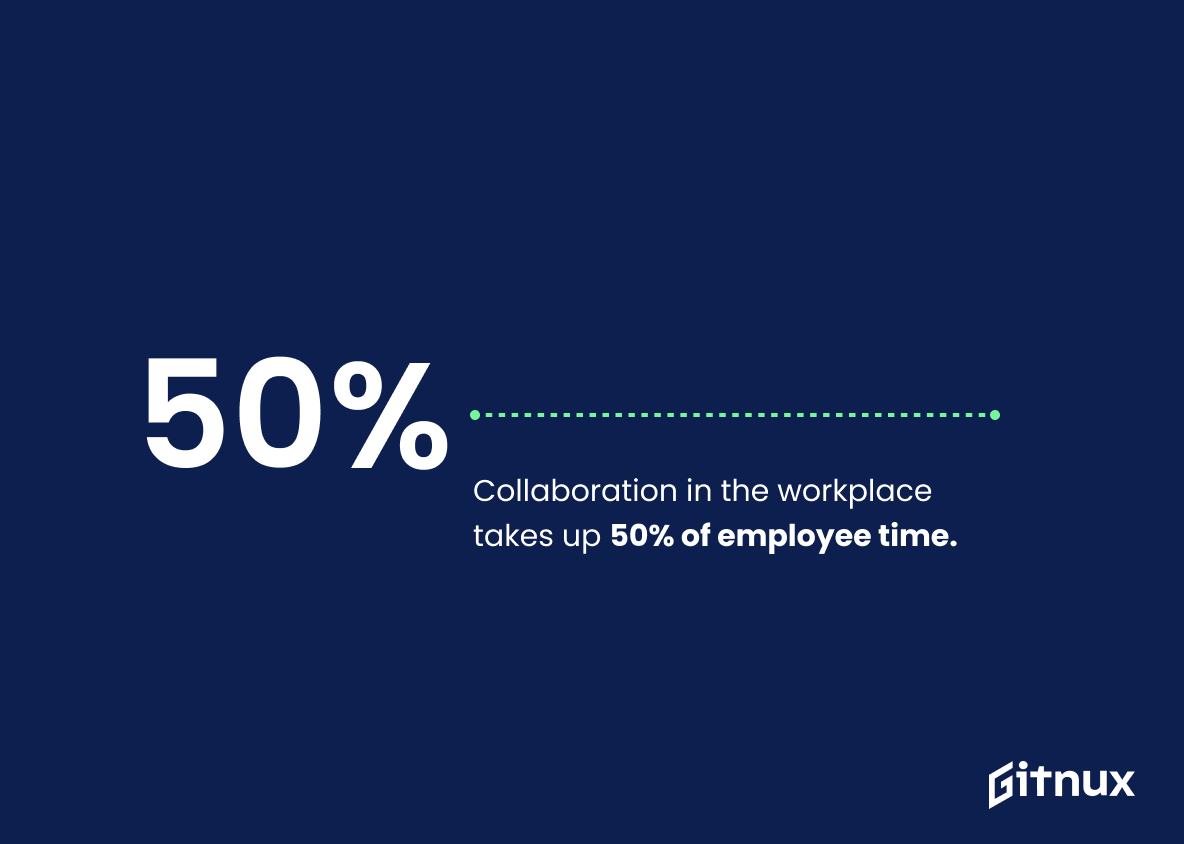In today’s fast-moving digital world, the need for effective collaboration strategies is paramount. They serve as the backbone of successful businesses, fostering productive environments and accelerating innovation. Delve into the dynamics of collaboration as we explore revealing data and compelling collaboration statistics in this blog post, aimed to make you understand its true potential better. We will unravel the profound impact it has on productivity, work culture, and overall business performance. Whether you are a startup enthusiast, business leader, or curious reader, these statistics will offer you valuable insights and fuel your understanding of the way collaboration is shaping the future of work.
The Latest Collaboration Statistics Unveiled
86% of respondents blame lack of collaboration or ineffective communication for workplace failures.
Highlighting this statistic serves as a clarion call for businesses, emphasizing the undeniable role effective communication and collaboration play in the workplace. It’s a powerful wake-up bell, alerting us to the fact that a whopping 86% of people attribute work failures to these under-recognized factors. This is indispensable information for anyone seeking to improve productivity and harmony in their workspace. Like a blinking neon sign, it directs us to the need for fostering a healthy, collaborative work environment and optimizing communication channels. Such meaningful insights, backed by numbers, are pivotal in crafting a compelling narrative about the crucial influence of collaboration in the working culture.
Teams where there is trust and openness have an 80% performance improvement when they collaborate
In the realm of team synergy, the highlighted statistic casts a revealing light on the impactful role of trust and openness. The fact that an 80% performance improvement manifests when teams embrace collaboration is not a mere number, rather it’s a testament to human potential. It reinforces how communication barriers can be torn down, leading teams to tap into previously unrecognised strength and productivity levels. It brings into focus the truth that when we invest in relationship-building and create a safe space for sharing ideas, we stimulate incredible growth – a whopping 80% spike in our team’s effectiveness. This figure is a strong justification for fostering transparency and collaboration in team environments, making it an important point to consider when discussing collaborative statistics.
97% of employees and executives believe lack of alignment within a team impacts the outcome of a task or project.
Peeling back the layers of this robust stat unveils a core truth – a whopping 97% of employees and executives agree that team alignment is a critical success factor for project outcomes. It takes a team, rowing in harmony, to navigate the sea of challenges and achieve the shores of success. Spelling out this reality in a blog post on Collaboration Statistics amplifies the importance of unity, synergy, and teamwork. It underscores that collaboration isn’t merely about individuals sharing physical or virtual space but about aligning thought processes, expectations, and goals. So, beyond the buzzword curtains, this crucial 97% paints a vivid picture of the landscape of collaboration and its undeniable connection to success.
Productive collaboration takes up only 8% of an office worker’s time.
Illuminating the often overlooked reality of office dynamics, the striking stat unveils that only a slim fraction – a meager 8% – of an office worker’s time is channeled into productive collaboration. Imagine, amid the demanding swirl of deadlines, meetings, and tasks, dredging out substantial growth from a minuscule portion of time. This underlines a compelling wake-up call: offices need to redefine and reorient their collaboration strategies to amplify their productivity scale effectively. In our deep dive into collaboration statistics, this nugget of data punctuates the critical importance of reassessing how our work hours are deployed; it injects a potent dose of urgency into the quest for better, engaged, and more fruitful collaborative practices.
About 75% of employers rate teamwork and collaboration as ‘very important’.
Drilling into the significance of our highlighted statistic, it presents a crystal clear insight into the corporate world. Around 75% of employers marking teamwork and collaboration as ‘very important’ brings forth the undeniably crucial role that collaborative efforts play in achieving business goals. This statistic casts a brilliant beacon of importance for integrating collaboration into corporate culture. In the grand tapestry of the blog post about Collaboration Statistics, this is more than just a number – it is a powerful testament to the palpable value of co-operative work in the contemporary employment landscape. Through this number, we’re not only quantifying attitudes, but also emphasizing a key driver behind successful businesses: well-oiled teamwork and seamless collaboration.
Over 50% of professionals who use collaborative tools agreed that they offered better opportunities for accelerated leadership.
Examining the above statistic, we cruise through the portal of insight, unravelling the unspoken significance of collaborative tools in professional realms. A swirling cloud of over 50% of professionals endorse the power of these tools, casting an affirmative nod at their ability to accelerate leadership opportunities. This crucial revelation serves as a burning beacon in the core of our blog post, underscoring the pivotal role of teamwork and collaboration towards leadership.
It transports the reader into a world where a collaborative tool isn’t just an aid, but also a bridge to traverse towards quicker leadership opportunities. Such a statistic, therefore, infuses credibility into our discourse on collaboration, magnifying its importance and making a compelling case for embracing collaborative efforts in the professional vista.
56% of businesses plan to increase spending on collaboration tools.
To underscore the potency of collaboration tools in the business landscape, consider this: Over half – a substantial 56% – of businesses have plans to broaden their investments in these very tools. This magnifying focus on collaboration systems illuminates their increasing significance and traction in the contemporary corporate sphere, indicating an apparent shift towards a more synergistic, cohesive, and cross-functional way of working. This change in spending underpins the anticipated growth, potential impact, and evolving role of collaboration tools, making it a central cornerstone in the discussion of collaboration statistics.
Collaborative efforts of over 1000 employees could save a company $2.5 million per year.
Unveiling the potential goldmine within our organisations, this riveting statistic sets the stage for a groundbreaking view towards synergistic efforts. It paint a picturesque landscape of how harmonized actions of over 1000 employees could cushion a company’s financial health by a massive $2.5 million annually. Beyond just numbers, it redefines how we perceive collaboration, essentially morphing it from a mere operational strategy to a robust cost-saving mechanism. In a world obsessed with productivity and profitability, such facts elevate the stature of collaborative work, making it a significant talking point of this blog post on Collaboration Statistics.
39% of surveyed employees believe people in their own organization don’t collaborate enough.
Unveiling the multi-layered significance encased within the statistic—39% of interviewed employees voicing the belief that their organization lacks adequate collaboration—within the domain of a blog post concentrated on collaboration statistics reveals intriguing nuances. On the surface, it prompts a captivating glimpse into the pervasive sentiment of dissatisfaction within the professional sphere regarding internal team work. Furthermore, it underscores the urgency for organizations to reevaluate their collaboration mechanisms and amplifies the call-to-action for fostering a more conducive collaborative workspace. Ultimately, this statistic serves as a beacon heralding a gaping room for improvement in the realm of organizational collaboration.
63% of teams using collaboration software see improvement in managing projects.
Delving into the world of Collaboration Statistics, a particularly gleaming nugget of information captures our attention: “63% of teams using collaboration software see an improvement in managing projects.” Now, imagine this number as an impressive lighthouse in a sea of information. As we navigate towards it, we understand that over half of all teams leveraging these digital tools are indeed enhancing their project management capabilities.
In the blogging universe, especially when we put under our lens the Collaboration Statistics landscape, this detail is like a compass guiding our understanding. It underscores the lifesaving role played by collaboration software in an era where project management has become increasingly complex. This statistic sends out a clear signal: in the quest for improved productivity and synchronicity, deploying collaboration tools isn’t just a strategy, but a game-changer.
With every 63 out of 100 teams being more adept at handling their projects due to the use of collaboration software, it’s a clarion call for other teams to follow suit. That’s the magic stroke painted by this statistic in our blog post canvas, illuminating the relevance of collaboration software in the story of project management success.
64% of employees consider email a collaboration tool, despite its impact on productivity.
Drawing our attention to the intriguing fact that 64% of employees view email as a collaboration tool, despite its evident influence on productivity, serves as a significant insight in a blog post about Collaboration Statistics. The nuance here reveals that a considerable percentage of the workforce still considers this traditional communication method a vital collaborative tool. This surprising revelation might encourage organizations and managers to reconsider their investment in cutting-edge technology or fancy collaborative tools. The omnipresence of email in the workforce and its role as a facilitator for teamwork could be leveraged to enhance overall productivity, even as we acknowledge its possible downsides.
69% of employees say collaboration tools have a significant impact on worker’s productivity.
Unveiling the power of numbers, the staggering 69% of employees confirming the substantial impact of collaboration tools on productivity serves as a compelling testament in our exploration of Collaboration Statistics. This not only underscores the intrinsic link between collaborative software and efficiency, but also signifies how, in today’s technologically driven arena, the modern workforce is increasingly relying on such digital platforms. The crucial role collaboration tools are playing in enhancing productivity thereby, establishes the imperative need for companies to invest in these tools to foster a more engaged, productive and collaborative work environment. Delving into these statistics paints a crystal-clear picture of the future parameters of work ethos and culture in our digital era.
Collaboration in the workplace takes up 50% of employee time.
Taking a magnifying glass to this fascinating number — “Collaboration in the workplace takes up 50% of employee time” — throws light on two monumental facets of the modern work environment.
First, it highlights the integral role collaboration holds in everyday business operations. The art of working together is not just an afterthought; it corrodes half the working hours, painting a vivid picture of the typical workday. The number itself, precisely having half the time for collaboration, implies that individual tasks and joint efforts go hand in hand, controlling the pendulum of productivity.
Secondly, on the grander canvas of efficient team management, this statistic emphasises the need for planning effective collaboration. If half the time is directed towards collective initiatives, strategies must be put in place to make this cross-pollination of skills, ideas, and efforts fruitful.
So, in decoding this statistic for a blog post on Collaboration Statistics, we’re not just talking about numbers. We are defining the essence of the modern workplace, underlining the power of teamwork, and articulating the importance of smart collaboration strategies.
Conclusion
After diving deep into these collaboration statistics, we can clearly see the immense importance of teamwork and cooperation in setting businesses apart in today’s competitive market. Integrated approaches, open communication, and mutual trust are all proven drivers of success. In fact, these statistical insights reinforce the age-old adage – “Teamwork makes the dream work.” The kind of innovation and creativity that collaboration brings is immeasurable, and the power it holds can propel businesses forward in ways nothing else can. Ignoring the significance of collaboration is a risk no modern business can afford. Hence, the time is ripe to harness the power of collaboration and use it as the stepping stone towards reaching unprecedented levels of success.
References
0. – https://www.www.kenan-flagler.unc.edu
1. – https://www.learning.linkedin.com
2. – https://www.www.salesforce.com
3. – https://www.online.stu.edu
4. – https://www.www.clickup.com
5. – https://www.www.coreaxis.com
6. – https://www.www.zendesk.com
7. – https://www.www.statista.com
8. – https://www.www.lucidchart.com
9. – https://www.www.queensu.ca
10. – https://www.www.cnbc.com
11. – https://www.www.mckinsey.com
